Plant Based Sources of Iron
In this episode we're talking about:
- how to ensure that your baby gets enough iron without relying on animal products
- plant-based options for your baby
- secrets to a well-balanced, iron-rich diet for your child
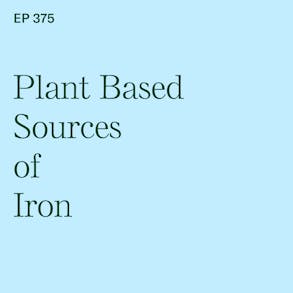
LISTEN TO THIS EPISODE
Episode Description
Will my baby get enough iron from food if we don’t eat meat? In this episode we’re exploring plant based sources of iron that babies can safely eat, including examples of starchy foods and plant proteins…as well as the best source of iron that also happens to be an allergenic food your baby can begin enjoying today!
Links from this Episode
- Baby-Led Weaning with Katie Ferraro program with the 100 First Foods™ Daily Meal Plan, join here: https://babyledweaning.co/program
- Baby-Led Weaning for Beginners free online workshop with 100 First Foods™ list to all attendees, register here: https://babyledweaning.co/baby-led-weaning-for-beginners
Other episodes related to this topic:
- Episode 263 - Iron Drops: Does My Baby Need Iron Supplements?
- Episode 169 - Iron: Does My Baby Really Need to Eat 11mg Iron Per Day?
- Episode 137 - Iron: Can My Baby Get Enough Iron from Baby-Led Weaning Foods?
- Episode 21 - 3 Easy Ways to Boost Your Baby's Iron Absorption

Latest Episodes
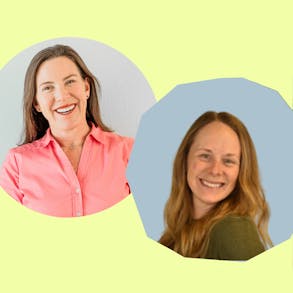
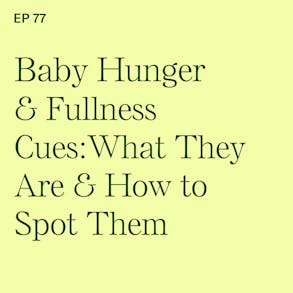
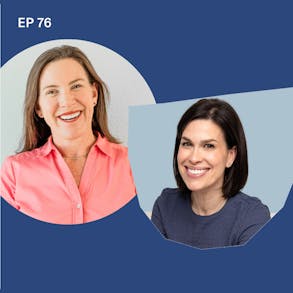
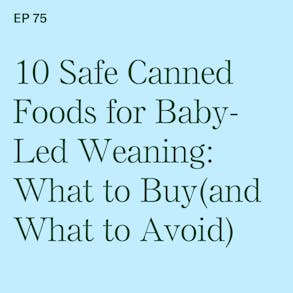
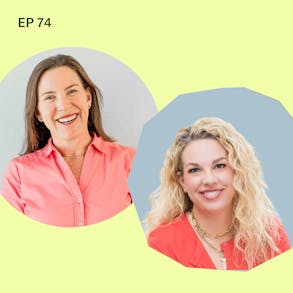
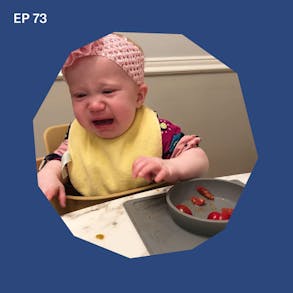
Katie Ferraro (1s):
I often get asked if I miss having babies. My youngest are twins and they're in kindergarten. Now is life changing you guys? No, I do not miss having babies of my own. It's a lot of work. And I feel lucky 'cause I get to work with other people's babies every day in real life. So I get my baby fix there. Right now I'm making all of my friend Carissa's son, baby Ezra's 100 first foods. I'm following my own 100 First Foods daily meal plan that's inside of my program. It's called Baby-Led Weaning with Katie Ferraro. And we're on week seven now. So I'm making all the recipes for foods 31 to 35 and it's getting fun now 'cause it's at around the 8- week mark. That's when babies will really kind of start jamming with solid foods. We're moving into phase two of the program. We're doing combination texture foods. The five new foods we're doing this week are melon, broccoli, rye, duck, and tofu.
Katie Ferraro (44s):
And I used to be so scared to make duck for babies, but I have this perfected, this really easy whole roast duck recipe that seriously anyone can do. And most grocery stores have frozen duck in their freezer aisle. So like it's weird, but you can do it too. If you want to follow along with that same 100 First Foods daily meal plan that we're doing with Baby Ezra, it's all in the Baby-Led Weaning with Katie Ferraro program. I have the exact sequence of foods to feed plus I've got this 100 First Foods content library so you can dip in and learn how to safely prepare all of the foods on the original 100 First Foods list. 'cause I want your baby to eat 100 foods before turning one as well. And you can follow that exact meal plan. Try all these new recipes too when you sign up at babyledweaning.co/program.
Katie Ferraro (1m 28s):
Again, that's babyledweaning.co/program, and I hope to see you there. What are your thoughts on pumpkin? Are you a pumpkin person? I mean, it's obviously everywhere this time of year, but your baby can get in on the pumpkin fun too. If you are looking for some ideas on how to make pumpkin safe for your baby, I've got some recipes you're gonna love. They're inside of my free feeding guide called Five Pumpkin Recipes for Baby-Led Weaning and you can download that at babyledweaning.co/resources. I hope you like these. The pumpkin curry recipe in there. It's one of my family's favorites and your baby's gonna love it too. Again, that's babyledweaning.co/resources. Four five pumpkin recipes your baby can eat for baby-led weaning.
Katie Ferraro (2m 9s):
And if you look at the list of protein foods, half are plant foods, 10 are plant foods, 10 are animal foods of the plant-based protein foods on the 100 First Foods list. All 10 of them meet that threshold of providing one milligram of iron or more per adult serving size. Now of course your baby's not eating the full adult serving size, but it's a good place to start from. And you're probably not gonna be surprised that all of these protein foods happen to be in the legume family. So they're dried peas or beans, which yes, you can make safe even for earlier eaters to eat. Hey there, I'm Katie Ferraro, registered dietitian, college nutrition professor and mom of seven specializing in baby-led weaning here on the Baby-Led Weaning Made Easy podcast.
Katie Ferraro (2m 51s):
I help you strip out all of the noise and nonsense about feeding, leaving you with the confidence and knowledge you need to give your baby a safe start to solid foods using baby-led weaning. Is it possible for your baby to get iron from foods even if your family doesn't eat animal foods? Right? You hear about the different types of iron. There's heme-based iron and non-heme iron and the heme that's found in animal foods is better absorbed by the human body. But there's a lot of people that don't eat foods with that type of iron in it. So how do they get iron? And if your family does not eat animal foods, I want you to know that you certainly can get enough iron from foods as your baby is making the transition to solid food.
Katie Ferraro (3m 38s):
So today's episode is all about plant-based sources of iron, which this is episode 375. And for as many of these mini training episodes as we've done, we've never had one dedicated to plant-based sources of iron. So somebody asked me about the other day and here we go. Here's how you can get iron from plant foods. Let's start at the beginning. Why is iron important? We have a lot of other iron-related episodes in this podcast. I'm gonna link some of the most downloaded iron-specific episodes in the description where you're listening to this if you wanna learn more. But the TLDR version regarding iron, it's a mineral that your body needs and your baby's body needs for growth and development.
Katie Ferraro (4m 19s):
So human bodies use iron to make hemoglobin, which is a protein in red blood cells that's responsible for carrying oxygen from the lungs to all the parts of the body. It also makes myoglobin, a protein that provides oxygen back to the muscles. So your body needs iron to make some other hormones. And it's really important for a lot of reasons. But when we think about babies in particular with regards to cognitive development, so everybody wants a baby with a functioning brain, right? Getting enough iron from foods will be important. Now, does all the iron need to come from food? Absolutely not. Please don't forget that even when you start solid foods, infant milk, which is breast milk or formula, will continue to be your baby's primary source of nutrition including iron. But doesn't my baby run outta iron at a certain point and then need to get it from food?
Katie Ferraro (5m 2s):
Yes, it is true that babies receive a big, big push of iron at the tail end of pregnancy from mom. So your baby was born prematurely. They might be at higher risk for iron deficiency and your doctor's aware of that and hopefully checked for that. But that maternal iron store, that baby gets from mom, it lasts for about the first four to six months of life. And somewhere around there the iron stores from mom start dissipating. But that's okay because we've got this little insurance policy going on called infant milk. So breast milk or formula is providing iron and your baby is also learning how to eat foods, which eventually will account for most of your baby's nutrition. But during the weaning period, six to 12 months of age when your baby is learning how to get more nutrition from food and eventually less from infant milk, we gradually do want to ramp up their ability to eat naturally occurring sources of iron, right?
Katie Ferraro (5m 49s):
You don't have to go buy fortified iron foods 'cause babies can learn to eat the naturally occurring sources of iron. So when it comes to plant versus animal sources of iron, it is true that the human body absorbs the heme-based iron. That's what we find in animal foods like egg yolk and meat and fish and poultry. That type of iron- heme iron- is better absorbed by the human body. But the type of iron found in animal foods called non-heme iron is still a very valuable source of nutrition. And if you don't eat animal foods, that's where you're gonna be getting the iron from. Now, regardless of whether your family does or does not eat animal foods, vitamin C is an important component in this discussion because vitamin C helps the body absorb iron, okay?
Katie Ferraro (6m 33s):
And it's the non-heme iron in humans that vitamin C helps. So when you have animal foods, there's a compound in there that helps the body absorb iron from those foods. But if you don't have animal foods, then vitamin C is the only dietary constituent other than the animal tissue which you're not eating that has been shown to promote the absorption of non-heme iron in humans. So the vitamin C piece is really important. So as we go through some non-heme plant-based sources of iron that your baby can safely learn to eat, I want you to keep in mind that you also want to be including vitamin C-containing foods as part of the diet. So the way that I structured this episode today is I actually went through my own 100 First Foods list to identify the plant-based sources of iron.
Katie Ferraro (7m 16s):
And the general rule of thumb is if I'm looking at a food and a package of a food that I'm gonna feed my baby, if there's one milligram of iron or more, I'm like, hey, that's a pretty decent source of iron. Now of course, absorption rates for iron vary wildly based on lots of different factors and your baby's not eating the full-blown adult portion size, especially early on they might get there. Okay, this is kind of just a ballpark. If you're looking at a food and there's like not close to one milligram of iron or zero milligrams of iron, that might still be a very valuable food, right? All the fruits and vegetables are great sources of vitamin C, but they for the most part don't have any iron. We're not discounting them just saying, well, that's not an iron food. And your baby needs a variety of foods to meet their nutrition needs, right? The iron foods are one thing, but if you don't have the vitamin C foods to help your baby absorb the iron from those plant foods, it really doesn't work as great.
Katie Ferraro (8m 1s):
So that's why we work on this diet diversity offering a variety of foods. So if we're looking at the original 100 First Foods list, the way we implement it is we follow a five step feeding framework where we introduce a new fruit on Monday, a new vegetable on Tuesday, a starchy food on Wednesday, a protein food on Thursday, and an allergenic food on Friday. So there's five categories in the 100 First Foods list. And if you don't have a copy of that original 100 First Foods list, I give it away to everybody for free on my online video workshop called Baby-Led Weaning for Beginners. You can take that workshop right now, or as soon as you're done listening to this episode later today, tomorrow, whatever works for your schedule, you can sign up at babyledweaning.co. And when you get the 100 First Foods list, you'll see that it's divided into those five food categories, right?
Katie Ferraro (8m 47s):
Fruits, vegetables, starchy foods, protein foods and allergenic foods. The fruits and the vegetables, we're skipping right over those because again, those are valuable foods for nutrition and taste and texture, but they don't contain iron. Not discounting them- we just are focusing on iron in this episode. So be sure to incorporate those to help your baby absorb the iron from the different plant foods that you're offering. But if we go to the third category, the starchy foods, the point of the starchy foods list is to show you a variety of different carbohydrate-containing foods that your baby can eat. Okay we know that families get stuck on pasta, potatoes, rice. Okay we get in that pasta, potatoes and rice rutt, it's what other carbohydrate foods can my baby or my family or even me eat, right? We all know we should be eating more whole grains, but guess what?
Katie Ferraro (9m 28s):
Whole grain foods are a very safe source of nutrition for your baby. And whole grains tend to have a ton more iron than their refined grain counterparts do.
Katie Ferraro (10m 50s):
So I stacked the starchy foods list with a lot of whole grains. Okay if you go through the starchy foods list on the 100 First Foods list, there's 20 foods on there. 12 of them meet that threshold of offering one milligram of iron or more per adult serving. Okay again, baby's not gonna eat that whole serving right off the bat, but this is a good one to teach your baby/ child/ yourself to learn how to eat because they're packed with nutrition, including iron. And I think sometimes when we think about whole grains, you're like, oh yeah, that's a good source of fiber. That's a good source of protein. But these foods are very valuable sources of iron as well. Now there is a compound in some whole grains they're called phytates, that kind of bind up and make some of the minerals a little bit less absorbable.
Katie Ferraro (11m 32s):
Things like calcium and iron. But I don't want you to worry about that. It's not a reason to not eat these foods. But of course absorption rates of iron do vary, but you can absorb iron in your body if it's not in the food to begin with. So we're starting with the foods that are higher sources of iron. And I wanna tell you, these are in alphabetical order 'cause this is how they are on the starchy foods list. I wanna give you 12 examples of starchy foods that are whole grain that meet that one milligram per cooked adult serving. I'm gonna start with A for amaranth, barley, cornmeal. I love cornmeal for making polenta for babies, right? The polenta you buy the store is way too high in salt, but it's so easy to make at home, makes these beautiful little finger foods, your baby can pick up and eat and sometimes you forget corn meal as a whole grain.
Katie Ferraro (12m 16s):
Kamut, millet, oatmeal. Sometimes parents ask, oh, if I'm gonna skip white rice cereal, can I do baby oatmeal? You don't need to do baby oatmeal, regular oatmeal. We can make it safe for your baby to eat. And even if it's unrefined as a whole grain, it has a pretty good amount of iron. Quinoa, rye, sorghum, spelt, even sweet potatoes. There's not nearly as much iron there as you're gonna find in the other whole grains, but more than you're gonna find in white potatoes. And then teff is the last one. So those 12 starchy foods, amaranth, barley, cornmeal, kamut, millet, oatmeal, quinoa, rye, sorghum, spelt, sweet potato and teff, all good sources of iron. And we haven't even hit the protein food category yet. Let's move there next.
Katie Ferraro (12m 56s):
If you look at the protein list, so I have 20 proteins in my protein list. 10 are plant foods and 10 are animal foods. And guess what? 10 out of 10 plant foods on the protein list meet that threshold of one milligram of iron per serving or more that we identify as being okay, a decent source of iron and somewhere a good place to start for your baby. Now you might get tired of hearing about legumes, so dried peas and beans. But every single plant-based protein on this list comes from those categories. So in general, the dried peas and beans category and lentils, those foods, great source of protein. Yeah, they have fiber, but they also have a really impressive amount of iron as well.
Katie Ferraro (13m 39s):
So the protein foods, the 10 plant foods we have on our protein list, adzuki beans, black beans, chickpeas, which you might also know as garbanzo beans, fava beans, kidney beans, lentils, lupini beans, mung beans, pinto beans, white beans. The next time you're like in your grocery store or your pantry, take a look at your beans. Okay I think you can have dried beans if you have the time/ energy/ know-how to soak them properly and cook them. I don't mess around with dried beans 'cause I never have enough time. I'm a big fan of canned beans. Yes, canned foods can work very well for your baby. We look for no added salt varieties of canned foods. And if you can't find them, just remember that if you rinse a canned bean product or canned good, you can reduce the sodium by about a third.
Katie Ferraro (14m 19s):
Now of course, if you make them from scratch yourself, they have no added salt. And inside of my program, Baby-Led weaning with Katie Ferraro, there's this 100 First Foods content library and they show you how to make all of these different foods safe for your baby at phase one, which is right when you start out with solid foods. 'cause you can't just open like a can of kidney beans and give it to your baby who's six or seven months of age or eight even, right? They don't have their pincer grasp yet. It's not safe for them to eat those smaller pieces of food until they've had enough exposure and experience with the longer pieces of food. But we can modify all of these different beans even for phase one to make them safe for earlier eaters. So the protein foods, again, I'll read 'em through one more time. The the 10 plant foods there, adzuki beans, black beans, chickpeas, fava beans, kidney beans, lentils, lupini beans, mung beans, pinto beans, white beans.
Katie Ferraro (15m 5s):
All of these are wonderful for babies because they contain all that other nutrition plus iron. If you're not eating animal foods- if you're eating animal foods, you're getting some iron there too. But it's a good idea to be incorporating some of these plant-based sources of iron as well. If you want to get that 100 First Foods content library that's inside of my program, all of that's linked up at babyledweaning.co. That's also where you can find the link to take that free workshop if you wanna just get the 100 First Foods list. But if you want me to show you how to make all of those foods that's inside of the program, babyledweaning.co/program. Now there's one final category of the 100 First Foods list where the last 20 foods reside and it's our allergenic foods category. Now, you might be aware that there are nine foods we call the big nine, that account for about 90% of food allergies in North America.
Katie Ferraro (15m 50s):
And four of those big nine foods are animal foods. So if we look at cow's milk, egg, fish, and shellfish, families that eat animal foods would regularly consume those and vegan families do not eat those foods. Some of our vegan families that kind of bend the rules and like, hey, I want my child to be introduced to that potentially allergenic protein because down the road they might decide to eat that food. And me introducing the allergenic food early and often helps lower the risk of food allergy just so even though I as an adult might be vegan, I'm not going to adhere as strictly to that for my baby because I want them to have exposure to that protein. Some of those families do it, some of 'em don't. They're like, nope, absolutely no animal foods. Okay, well if you are not eating fish or shellfish or cow's milk or egg, you can't, there is no way that you're going to introduce your baby to that protein to lower the risk of food allergy.
Katie Ferraro (16m 33s):
But that's a decision that family made. But if we look at the allergenic foods lists actually have 20 different foods, even though there's only nine different food categories. We have a variety of different ways to introduce these different allergenic foods. So some of the allergenic foods on that list are plant-based and some of those meet this iron threshold to be considered a good plant-based source of iron for your baby. So four of the foods that are of the 20 on the allergenic foods list meet that threshold and those are edamame- so that's one of the ways we do soy. You can modify that for early eaters. For older babies, they can, you can just cook and offer the little green soybeans. I usually smash them with my thumb to make them flat for those are for babies who are in phase two or beyond. So like the second eight weeks of baby-led weaning or beyond.
Katie Ferraro (17m 14s):
They're generally safe to try those smaller pieces of food and they know what to do with them. But we have this really cool edamame hummus recipe inside of our program for the early eaters if you want to incorporate edamame for your baby who's in the first eight weeks of starting solid foods. Another food that is on the allergenic foods list that has an impressive amount of iron is sesame.
Katie Ferraro (18m 49s):
We do that in the form of tahini, which is sesame paste, which you might be familiar with as an ingredient in hummus. Now, commercial hummus that you buy at the store tends to have too much salt in it for babies, but you can very easily make your own. We actually do hummus a number of different ways with some of those other canned beans that we talked about from the protein list. So some canned beans with some tahini, I mean like double iron overload. I'm being facetious, your baby's not going to overload on iron from food. It's actually impossible for your baby to megadose on iron from food. Megadosing would only occur if your baby was taking like very, very high levels of of supplemental iron, which we've covered supplemental iron separately in the podcast, but I don't recommend megadosing. Another food number three from the allergenic foods list that's high in iron is tofu.
Katie Ferraro (19m 31s):
Tofu is one of my favorite cheapest ways to introduce babies to soy, the potentially allergenic food soy, but it also has an impressive amount of iron, like there's so much bang for your buck in a block of tofu, like, don't get me started. I love tofu. The last one is wheat germ. Now, babies don't eat a ton of wheat germ. Adults don't eat a ton of it either, but even in a very, very small amount of wheat germ, there's an impressive amount of iron because the wheat germ, the germ is the middle of the kernel, right in the middle of the kernel is where the fat and the minerals including iron resides. So wheat germ is a wonderful source of iron for your baby. And just a, if you're struggling with some of these foods that are a little more on the slippery side, like I was doing peaches for a baby the other day and peaches are not in season. So I was working with canned peaches. So you can find canned peach slices that are packed in their own juice or water, so no syrup, 'cause syrup is an added sugar, but man, a canned peach is a slipper.
Katie Ferraro (20m 17s):
A little sucker roll it in a little bit of wheat germ. Okay, wheat it germ does contain wheat. So that's another way to introduce your baby to that potentially allergenic food wheat. But you can just, it's like a little dusting. You roll that, even the avocado slice or the pear or the peach, whatever the slippery item is in the wheat germ the baby, it creates a little bit of traction for the baby to pick that food up and bring it to their mouth. And it also is another way to give them a little bit of iron. So I hope you can see that from the starchy foods list, the protein foods and the allergenic foods category. There are lots of options for your baby. In this episode I shared 12 starchy foods, 10 protein foods, and then four of the allergenic foods. So what's that 14 plus 12, 26 different foods that contain iron that are not animal foods that your baby can safely learn how to eat.
Katie Ferraro (20m 60s):
If you wanna grab that 100 First Foods list, it's on my free online workshop, Baby-Led Weaning for Beginners. If you want me to show you how to make all the foods on the 100 first foods list, that's inside my program at babyledweaning.co/ program. Thank you guys so much for listening. And thank you to our partners at AirWave Media. If you like podcasts that feature food and science and using your brain, check out some of the podcasts from AirWave Media, all of the shownotes for this episode with the links where you can get the 100 First Foods list and extra help if you want it on how to make these foods safe for your baby for all their ages and stages. That will all be linked up in the shownotes, which you can find at BLW podcast.com/375. Thank you so much for listening.
Katie Ferraro (21m 47s):
And I, hope you try out some of these plant-based sources of iron soon. If you're interested in doing baby-led weaning, but you're not exactly sure, like what does that mean? What does it look like? Where do I start? My online program called Baby-Led Weaning with Katie ferraro has everything you need to give your baby a safe start to solid foods and get them to eat over 100 foods before they turn one. Whether you're terrified of choking or maybe you've started but you feel like you're feeding your baby the same foods over and over 'cause you don't know what to feed next, or you're looking for guidance on how to prepare foods safely for your baby's age and stage, my program has exactly what you need. There's five hours of concise self-paced video training. You can knock this thing out during nap time this week. You also get access to my 100 First Foods content library so you can see and learn exactly how to prep all of the 100 foods as well as my original 100 days meal plan.
Katie Ferraro (22m 33s):
I've been refining this program for the last seven years. Just today, a mom wrote to me and told me that the 100 days meal plan has been a "game changer" for her busy lifestyle. When you join the program, you also get access to over a hundred phase two combination food recipes. So you're gonna try out the trickier textures, push your baby's palate, and what's cool about these recipes is your whole family will enjoy them. So everything you need to give your baby a safe start to solid foods is inside of the program. It's created by me, a registered dietitian who specializes in infant feeding. If you're tired of hunting and pecking around the internet trying to piece this stuff together on your own, I put it all in one convenient place for you. I invite you to check out the Baby-Led Weaning with Katie Ferraro program that's at babyledweaning.co. Again, that website is babyledweaning.co and click on program to learn more.
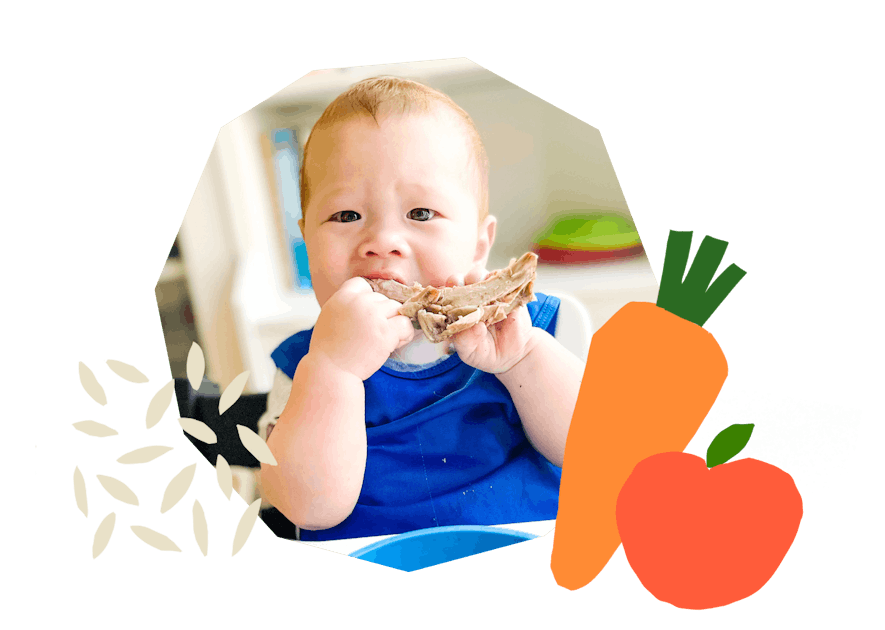
The Program Baby-Led Weaning with Katie Ferraro
A step-by-step digital program for starting solid foods safely and navigating the original 100 FIRST FOODS™ meal plan with baby-led weaning.
 EXPERT-LED, PROVEN APPROACH TO EATING REAL FOOD
EXPERT-LED, PROVEN APPROACH TO EATING REAL FOOD CONCISE VIDEO TRAININGS TO MASTER BABY-LED WEANING
CONCISE VIDEO TRAININGS TO MASTER BABY-LED WEANING 100 FIRST FOODS DAILY MEAL PLAN WITH FOOD PREP VIDEOS
100 FIRST FOODS DAILY MEAL PLAN WITH FOOD PREP VIDEOS
Baby-Led Weaning for Beginners Free Workshop
Is your baby ready to start solid foods, but you’re not sure where to start? Get ready to give your baby a solid foundation to a lifetime of loving real food…even if you’re feeling overwhelmed or confused about this next stage of infant feeding.
Get baby-led weaning recipes and tips delivered to your email inbox.

